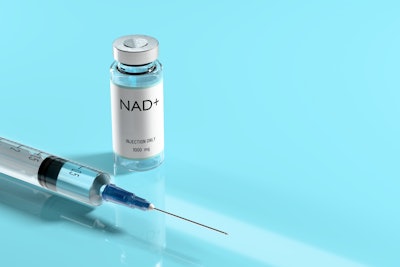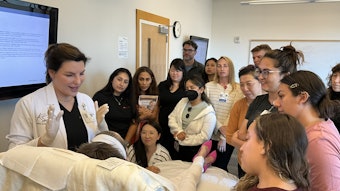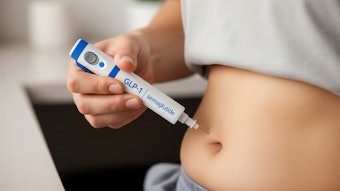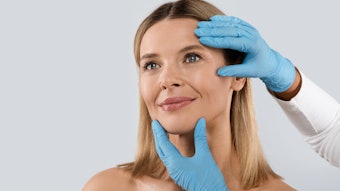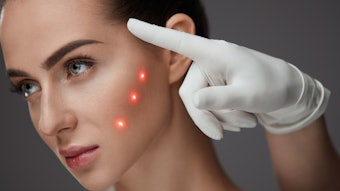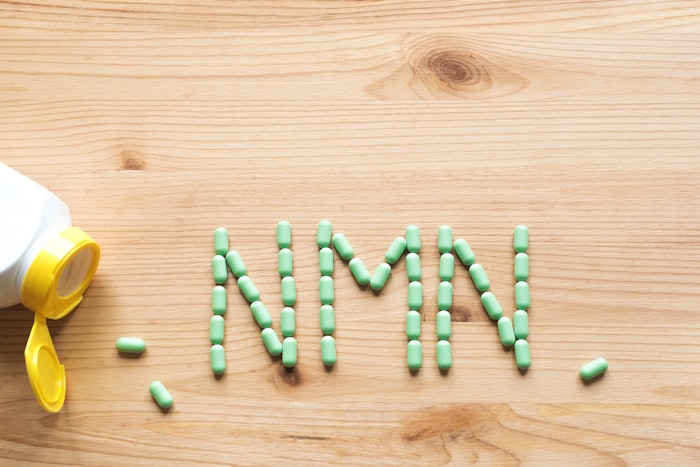
In 2022, the FDA decided to revoke Nicotinamide Mononucleotide (NMN) from being marketed as a dietary supplement, declaring it needed to first undergo investigation as a new drug. On Sept. 29, three years later, however, the FDA amended its decision and ruled the drug as lawful to use in dietary supplements. Because this is a direct precursor, compared to other NAD+ precursors that must first be converted to NMN inside the cell to become NAD+, patients could see these supplements paired with the medical-grade NAD+ therapies they receive at medspas, and potentially alongside GLP-1 use.
This article is only available to registered users.
Log In to View the Full Article
In 2022, the FDA decided to revoke Nicotinamide Mononucleotide (NMN) from being marketed as a dietary supplement, declaring it needed to first undergo investigation as a new drug. On Sept. 29, three years later, however, the FDA amended its decision and ruled the drug as lawful to use in dietary supplements. Because this is a direct precursor, compared to other NAD+ precursors that must first be converted to NMN inside the cell to become NAD+, patients could see these supplements paired with the medical-grade NAD+ therapies they receive at medspas, and potentially alongside GLP-1 use.
Therapies medspas currently offer for optimization of NAD+ include nasal spray application, IV infusion and injectables. These coenzymes are shown to decrease with age and lead to age-related diseases—essential to convert food into energy and support cellular repair, DNA maintenance and overall metabolism. Many patients, including younger adults, are interested in boosting energy, cellular repair and longevity, making these treatments appealing as part of a proactive wellness trend occurring in medspas.
Evaluating NMN’s Biological Role, Benefits and Unresolved Concerns
Prior to NMN being accepted in dietary supplements, the main precursor for NAD+ in the supplement market was nicotinamide riboside (NR). NR and NMN differ in their structure but also how they enter cells, and while NR is effective in NAD+ optimization, NR is converted to NMN by NR kinase (NRK) [1]. So, while NR must be converted, NMN is the closest precursor to NAD+ in the current supplement market. There is no record of the FDA conducting clinical trials for NMN, but several studies were managed by independent researchers over the years, looking at its potential efficacy.
 As a direct precursor to NAD+, NMN may help support energy levels, metabolism and cellular repair more efficiently than other supplements.Courtesy of Gudellaphoto at Adobe Stock
As a direct precursor to NAD+, NMN may help support energy levels, metabolism and cellular repair more efficiently than other supplements.Courtesy of Gudellaphoto at Adobe Stock
Rodent studies indicate that NMN can effectively enhance NAD + synthesis in peripheral tissues and organs, including the brain, blood vessels, skeletal muscle, adipose tissue, pancreas, heart, liver, kidneys, and eyes [4]. However, NMN still lacks sufficient clinical evidence, a 2024 study notes, and its effects may be harmful in certain contexts—such as potentially promoting tumor angiogenesis or counteracting antineoplastic drugs by restoring NAD+ levels—highlighting the need for deeper investigation, especially in cancer patients [5].
Who Can Benefit from NMN—and When Medical Therapies Are Still Needed
Alexander Zuriarrain, MD, FACS, the founder of Hydrology Wellness in Miami and Zuri Plastic Surgery says now that NMN is once again lawful for use in dietary supplements, he anticipates incorporating it more broadly, particularly as an accessible, at-home option to complement in-office NAD+ IV therapy. While IV remains the fastest and most reliable way to elevate NAD+ levels in his practice, he says NMN offers a gentler, daily approach for people who may not need or want medical treatment, and simply want more energy.
“In some cases, NMN may serve as a bridge between lifestyle measures and more intensive medical therapies,” he says. “It’s not a replacement for IV therapy, but it does add a valuable tool to our toolkit.”
NMN working alongside IV, or on its own, will not be suitable for everyone at the wellness clinic. Ideal candidates, Zuriarrain says, would be individuals in their 30s to 60s who want to support longevity, mitochondrial health, metabolism, cognitive performance or exercise recovery. Medical therapies, such as NAD+ IV therapy, B-complex injections, peptide therapy or prescription metabolic medications, would be the route someone should take if they’re experiencing:
- Severe or persistent fatigue
- Insulin resistance or prediabetes
- Neurological symptoms
- Rapid aging markers
- Chronic inflammatory states
- Plateaued weight loss despite lifestyle optimization
 NMN can be used alongside in-office NAD+ therapies, offering a gentler, at-home option to help maintain metabolic support between treatments.Courtesy of Ramil Gibadullin at Adobe Stock
NMN can be used alongside in-office NAD+ therapies, offering a gentler, at-home option to help maintain metabolic support between treatments.Courtesy of Ramil Gibadullin at Adobe Stock
Considering NMN’s implication on insulin and obesity management, the newly approved supplement could potentially help with the side effects of GLP-1, including muscle mass loss by improving mitochondrial efficiency and also accommodating the decrease in energy that follows suppressed appetite in GLP-1 users. Zuriarrain says in addition, NMN may assist with GLP-1 use by stabilizing blood sugar as body weight decreases and also improving recovery from exercise during weight loss.
“While more research is needed, combining NMN with GLP-1 therapy could enhance metabolic resilience and overall well-being,” he adds.
How to Use NMN Safely: Dosing, Oversight and Essential Quality Checks
Amy Lee, MD is Chief Medical Officer at bluSONIL, a longevity, wellness and regenerative aesthetics studio. The clinic offers NMN in oral form for patients to use at home, while implementing NAD+ in forms of injections and infusion, like Zuriarrain and his clinic. She says standard doses start at 250 mg daily. The maximum dose studies have used is about 1250 mg, but as mentioned earlier, more research is needed to assess optimal dosing for various conditions and long-term use.
Despite why an individual might inquire about NMN at a medspa, Lee and Zuriarrain say although it is ruled lawful in supplements, nutrition regimens that consider dosage, reasoning and goals should be guided by professionals. Zuriarrain says, “Legality does not guarantee quality. The supplement industry varies widely in purity, sourcing and manufacturing standard, and some products may contain very little active ingredient or be contaminated with unwanted byproducts.”
He points out five safeguards that physicians and consumers should look for when choosing an NMN supplement:
- cGMP-certified manufacturing facilities
- Third-party testing for purity and potency (NSF, Informed Choice, USP or equivalent)
- Stability testing confirming that NMN remains active throughout shelf life
- Transparent labeling of the exact form of NMN used
- Absence of fillers or unnecessary additives
Foundational Habits Matter More Than Any Single NAD+ Booster
As NAD+ optimization becomes an area of interest for individuals looking for anti-aging solutions, it's important to remember that optimizing the NAD+ coenzyme is not a fix-all. “I wish people understood that NAD+ optimization isn’t about a single supplement, it’s about the entire ecosystem of metabolic health. Sleep, stress, alcohol intake, exercise, micronutrient status and protein intake all influence NAD+ production far more dramatically than people realize. NMN can amplify healthy habits, but it cannot compensate for missing fundamentals,” Zuriarrain says.
References:
1- https://www.science.org/doi/10.1126/sciadv.adr1538
2- https://pmc.ncbi.nlm.nih.gov/articles/PMC8444956/
3- https://pubmed.ncbi.nlm.nih.gov/33888596/
4- https://translational-medicine.biomedcentral.com/articles/10.1186/s12967-024-05614-9
